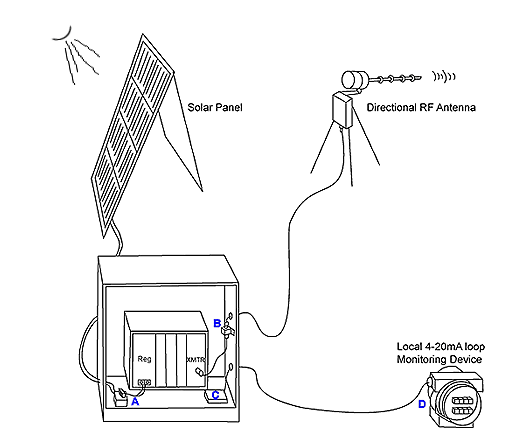Remote locations present special concerns in dealing with transient overvoltages. Often sites are chosen for unobstructed RF communication paths and optimum solar panel exposure. This means an elevated, unprotected location some distance from the monitoring equipment. The result is increased probability of nearby lightning strikes and long wiring runs. Long wires can act like an antenna picking up electromagnetic transients. A lightning strike close by can inject part of its energy into wires running into the electronics cabinet. Here, the transientís current, voltage and energy can easily overpower circuits not designed to handle them resulting in equipment disruption, damage or destruction. Transient overvoltage protectors designed to withstand and reduce transients to tolerable levels can be placed between the field wiring and cabinet electronics to protect susceptible circuits. On long wires, protectors are recommended for sensitive equipment on both ends. This is because the wireís impedance i.e., its resistance and inductance, will isolate one end from the other for a rapidly rising, high current transient. An additional concern in selecting overvoltage protectors when using a solar panel power source is the output voltage. It is specified at a minimum light level, e.g. 12 Vdc, but can reach substantially a higher operational voltage at full insolation (Point at which the suns radiation received by the earthís surface is highest.) We recommend using an 18 Volt rated protector on a 12 Vdc solar panel.
|









